A lead shot of 1 mm diameter falls through a long colummn of glycerine. The variation of the velocity v with distance covered (s) is represented by
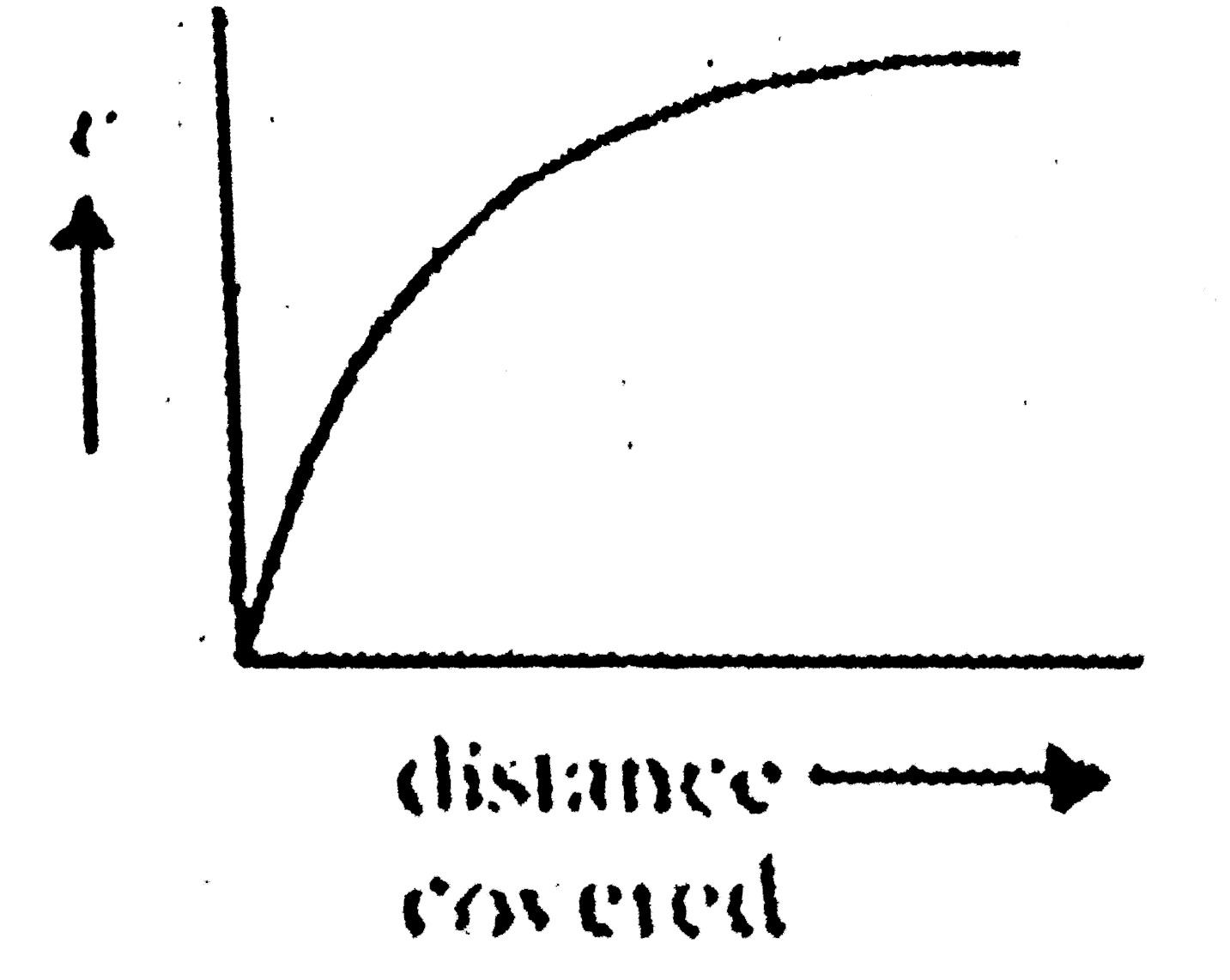

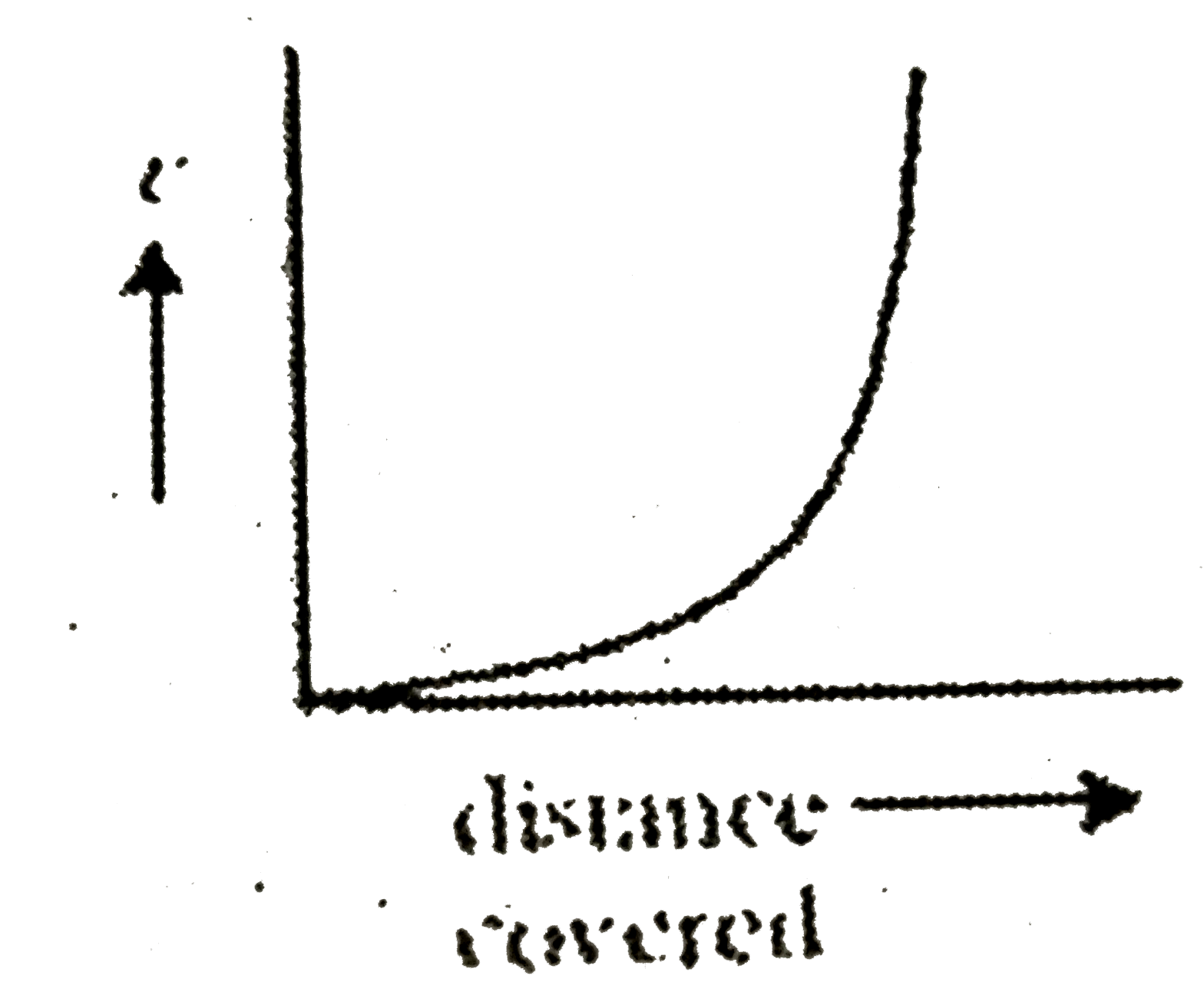
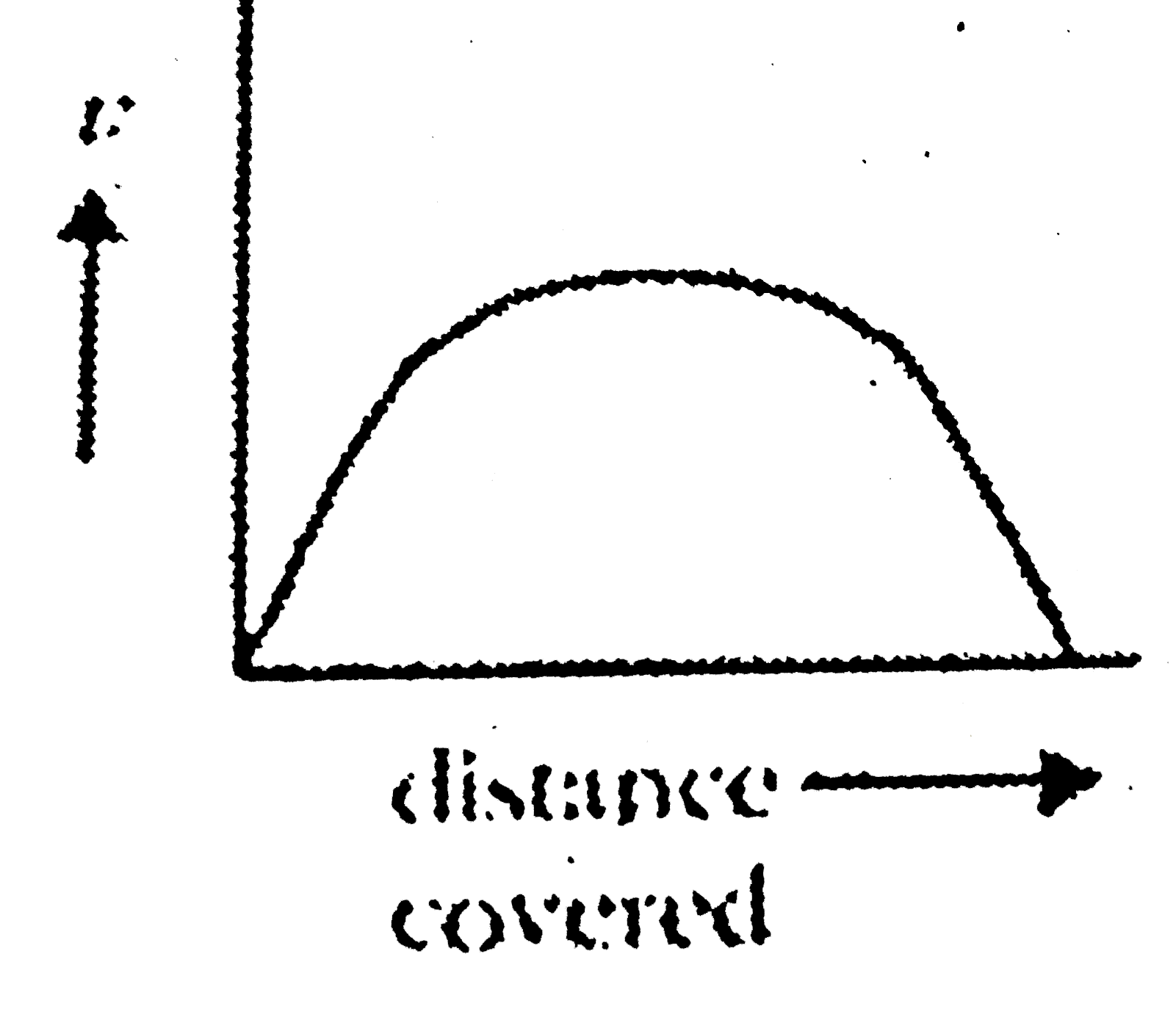
The correct Answer is:A
To solve the problem of a lead shot falling through a long column of glycerine, we need to analyze the forces acting on the shot and how they affect its motion. Here’s a step-by-step solution:
Step 1: Understand the Forces Acting on the Lead Shot
When the lead shot is released, two main forces act on it:
- Gravitational Force (Weight): This force pulls the shot downward and is given by Fgravity=mg, where m is the mass of the lead shot and g is the acceleration due to gravity.
- Viscous Drag Force: As the shot moves through glycerine, it experiences a drag force due to the viscosity of the fluid. This force opposes the motion and is given by Stokes' law for small particles, Fviscous=6πrηv, where r is the radius of the shot, η is the viscosity of glycerine, and v is the velocity of the shot.
Step 2: Analyze the Motion
Initially, when the shot is released, it accelerates due to the gravitational force. As its velocity increases, the viscous drag force also increases. Eventually, the drag force will balance the gravitational force, leading to a terminal velocity where the net force on the shot becomes zero.
Step 3: Determine the Velocity vs. Distance Relationship
- Initial Phase: When the shot is released, it accelerates, and its velocity increases with distance. This phase can be represented by a curve that rises steeply.
- Terminal Velocity Phase: Once the drag force equals the gravitational force, the shot reaches a terminal velocity. At this point, the velocity remains constant as the shot continues to fall.
Step 4: Graphical Representation
The graph of velocity v versus distance s will show:
- An initial increasing slope (representing acceleration).
- A plateau where the velocity becomes constant (representing terminal velocity).
Conclusion
The correct representation of the velocity v as a function of distance s is a curve that starts steep and then levels off, indicating that the lead shot accelerates initially and then moves at a constant speed.
Final Answer
The variation of the velocity v with distance covered s is represented by a graph that starts with a steep incline and then levels off, corresponding to the first option given in the problem.
---
When the lead shot is released, two main forces act on it:
- Gravitational Force (Weight): This force pulls the shot downward and is given by Fgravity=mg, where m is the mass of the lead shot and g is the acceleration due to gravity.
- Viscous Drag Force: As the shot moves through glycerine, it experiences a drag force due to the viscosity of the fluid. This force opposes the motion and is given by Stokes' law for small particles, Fviscous=6πrηv, where r is the radius of the shot, η is the viscosity of glycerine, and v is the velocity of the shot.
Initially, when the shot is released, it accelerates due to the gravitational force. As its velocity increases, the viscous drag force also increases. Eventually, the drag force will balance the gravitational force, leading to a terminal velocity where the net force on the shot becomes zero.
- Initial Phase: When the shot is released, it accelerates, and its velocity increases with distance. This phase can be represented by a curve that rises steeply.
- Terminal Velocity Phase: Once the drag force equals the gravitational force, the shot reaches a terminal velocity. At this point, the velocity remains constant as the shot continues to fall.
The graph of velocity v versus distance s will show:
- An initial increasing slope (representing acceleration).
- A plateau where the velocity becomes constant (representing terminal velocity).
The correct representation of the velocity v as a function of distance s is a curve that starts steep and then levels off, indicating that the lead shot accelerates initially and then moves at a constant speed.
The variation of the velocity v with distance covered s is represented by a graph that starts with a steep incline and then levels off, corresponding to the first option given in the problem.
Similar Questions
A body starting from rest moves along a straight line with a constant acceleration. The variation of speed (v) with distance (s) is represented by the graph:
View SolutionA bar magnet is made to fall through a long vertica! copper tube. The speed (V) of the magnet as a function of time (t) is best represented by
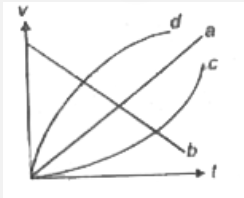
View SolutionTwo identical source moving parallel to each other at seperation 'd' are producing sounds of frequency 'f' and are moving with constant velocity v0. A stationary .observer 'O' is on the line of motion of one of the sources. Then the variation of beat frequency heard by O with time is best represented by: (as they come from large distance and go to a large distance)

View SolutionA spherical steel ball released at the top of along column of glycerin of length l falls through a distance l/2 with accelerated motion and the remaining distance l/2 with uniform velocity let t1 and t2 denote the times taken to cover the first and second half and w1 and w2 are the work done against gravity in the two halves, then compare times and work done.
View SolutionAt freezing point of a solution there is always
View SolutionTwo ends of a rod of non uniform area of cross section are maintained at temperature T1and T2 (T1>T2) as shown in the figure
If l is heat current through the cross-section of conductor at distance x from its left face, then the variation of l with x is best represented by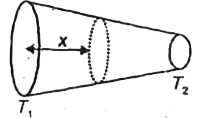
View SolutionRefering to v−s diagram, find:
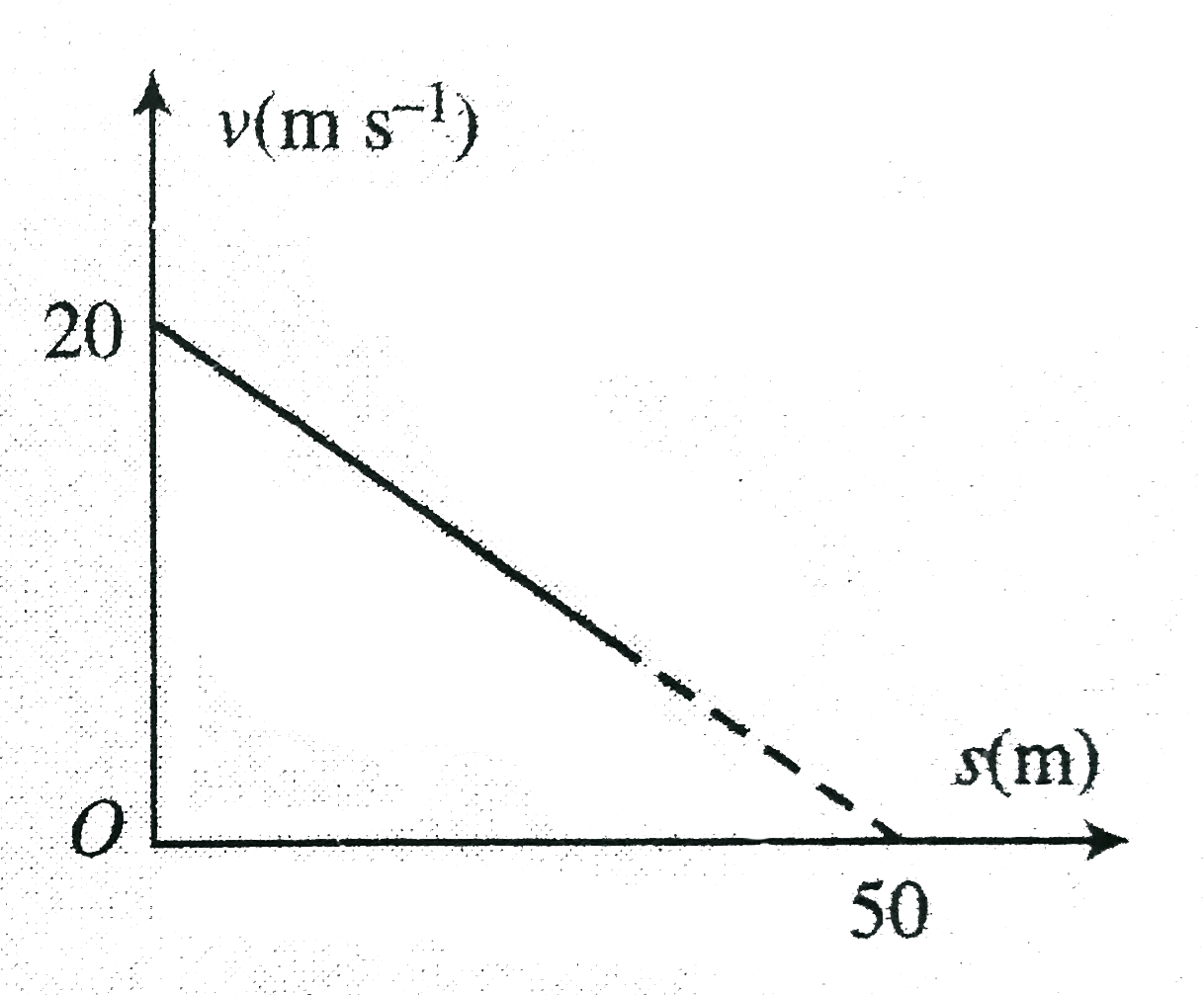 .
.
a. Acceleration of the particle when its velocity becomes half of the initial velocity.
b. Total distance covered by the particle.
View SolutionFrom amongst the following curves, which one shows the variation of the velocity v with time t for a small sized spherical body falling vertically in a long column of a viscous liquid
View SolutionA point object moves along an arc of a circle of radius 'R'. Its velocity depends upon the distance covered 'S' as V = K√S where 'K' is a constant. If ' theta' is the angle between the total acceleration and tangential acceleration, then
View SolutionA metal sphere of radius 1 mm and mass 50 mg falls vertically in glycerine. Find (a) the viscous force exerted by the glycerine on the sphere when the speed of the sphere is 1cms−1, (b) the hydrostatic force exerted by the glycerine on the sphere and (c) the terminal velocity with which the sphere will move down without acceleration. Density of glycerine =1260kgm−3 and its coefficient of viscosity at room temperature = 8.0 poise.
View Solution
